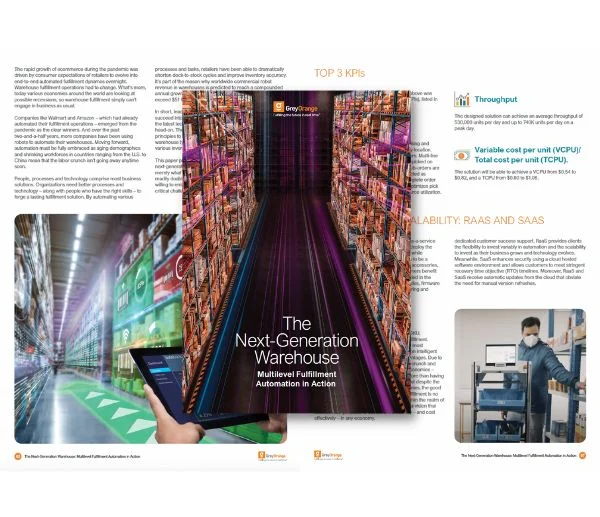


The rapid growth of ecommerce during the pandemic was driven by consumer expectations of retailers to evolve into end-to-end automated fulfillment dynamos overnight. Warehouse fulfillment operations had to change. What’s more, today various economies around the world are looking at possible recessions, so warehouse fulfillment simply can’t engage in business as usual.
Companies like Walmart and Amazon – which had already automated their fulfillment operations – emerged from the pandemic as the clear winners. And over the past two-and-a-half years, more companies have been using robots to automate their warehouses. Moving forward, automation must be fully embraced as aging demographics and shrinking workforces in countries ranging from the U.S. to China mean that the labor crunch isn’t going away anytime soon.
People, processes, and technology comprise most business solutions. Organizations need better processes and technology – along with people who have the right skills – to forge a lasting fulfillment solution. By automating various processes and tasks, retailers have been able to dramatically shorten dock-to-stock cycles and improve inventory accuracy. It’s part of the reason why worldwide commercial robot revenue in warehouses is predicted to reach a compounded annual growth rate of over 23% from 2021 to 2030 and exceed $51 billion by 2030.
In short, leading retailers need next-generation warehouses to succeed into the future. The next-generation warehouse uses the latest technology to tackle the current challenges head-on. The next-gen warehouse uses automation design principles to implement fulfillment – across different warehouse types and footprints – and meet requirements for various inventory types.
This paper presents an example of how a real-life next-generation warehouse operates. The goal is not to show merely what’s possible in an ideal scenario, but rather what’s readily doable for retail and warehousing companies that are willing to embrace next-generation solutions for their most critical challenges.
Download The Next-Generation Warehouse by filling out the form on this page.